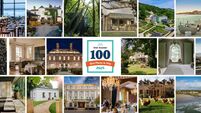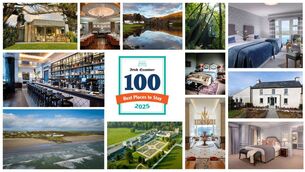Why Portugal’s Madeira Island is perfect for every holidaymaker

Paul do Mar2©Hugo Reis.jpg
Portugal's Madeira Island lays claim to hefty bragging rights. Dubbed the “Pearl of the Atlantic”, its location between Africa and Europe ensures a year-round mild and subtropical climate, securing the archipelago’s peerless reputation. Lush volcanic landscape, commanding views and a cultural heritage dating back to the 15th century make it a must for visitors with varied tastes. Whether sampling gastronomic goodies, wondering at waterfalls, or trekking in the ancient rainforests, consider your bucket list ticked. Adventure awaits everyone; it’s now a matter of deciding what yours looks like.











- 3 hours 40 mins
- www.discoveringmadeira.com
- www.madeira-adventure-kingdom.com
- www.bravelanders.com
- www.montepalace.com
- www.carreirosdomonte.com
- madeiracablecar.com
- www.niniandradesilva.com/en/design-centre








